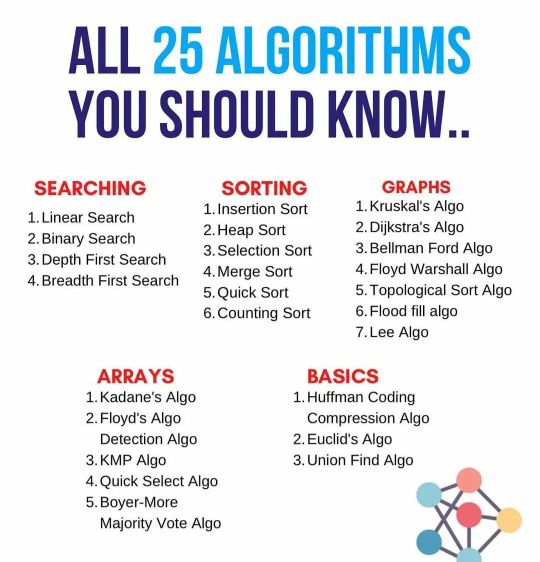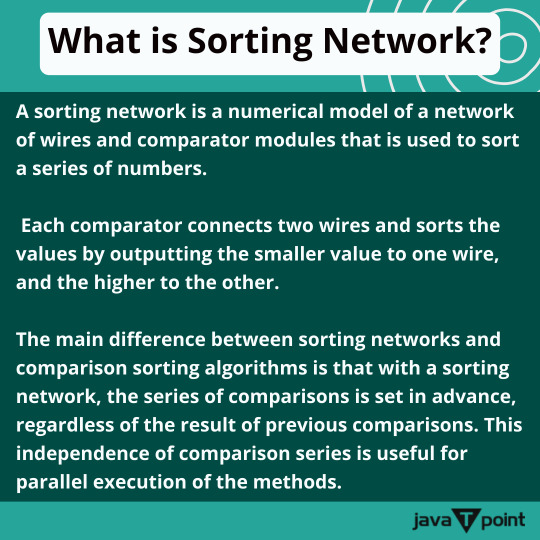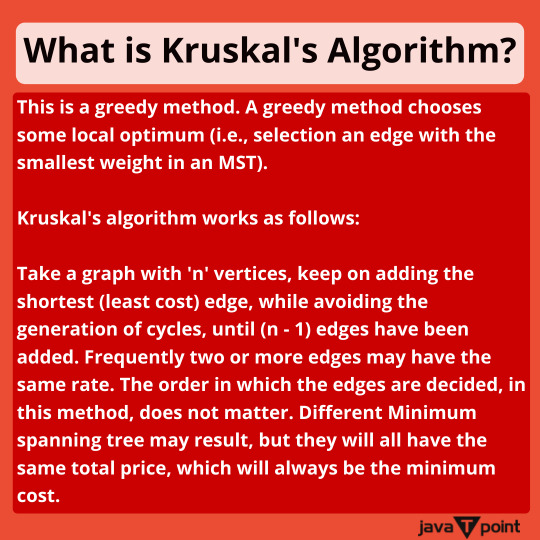#linearsearch
Explore tagged Tumblr posts
Text
Linear search program in C
Learn linear search in C with a simple example & full code! Perfect for beginners. Step-by-step guide to master searching in arrays. Start coding now!
Are you new to programming and struggling to understand how searching works in C? Let’s simplify it! In this guide, we’ll break down the linear search program in C step-by-step, with real-life examples and code even a 10-year-old can grasp. By the end, you’ll know how to find elements in an array like a pro! What is Linear Search? Imagine you’ve lost your favorite toy in a messy room. How do…
#AlgorithmTutorial#CodeNewbie#CodingTutorial#CProgramming#LearnToCode#LinearSearch#ProgrammingBasics#TechEducation
0 notes
Text

Differences between Linear search and Binary search . . . Explore this essential Data structure! It covers key topics and resources for every tech enthusiast from algorithms to Data Structure. Perfect for learning and growth. Let's connect and innovate together! Check the link below: https://bit.ly/42pXfP9
0 notes
Text
Thuật toán tìm kiếm tuyến tính
Tìm kiếm tuyến tính (Linear Search) là một thuật toán đơn giản, dùng để tìm kiếm một giá trị trong một danh sách (ví dụ: array) theo cách tuần tự từ đầu đến cuối. Thuật toán này kiểm tra từng phần tử của danh sách cho đến khi tìm thấy giá trị cần tìm hoặc kiểm tra hết toàn bộ danh sách. Ví dụ thuật toán tìm kiếm tuyến tính bằng Java public class LinearSearch { public static void main(String[]…
View On WordPress
0 notes
Photo

Follow 4 more @elon_s.code #algorithm #algorithms Searching #linearsearch h #binarysearch #depthfirstsearch #breadthfirstsearch Sorting #insertionsort #heapsort #selectionsort #mergesort #countingsort Graphs #kruskalalgorithm #dijkstraalgorithm #bellmanfordalgorithm Arrays & basics #Java #cpp #python https://www.instagram.com/p/CnBInUiJmfq/?igshid=NGJjMDIxMWI=
#algorithm#algorithms#linearsearch#binarysearch#depthfirstsearch#breadthfirstsearch#insertionsort#heapsort#selectionsort#mergesort#countingsort#kruskalalgorithm#dijkstraalgorithm#bellmanfordalgorithm#java#cpp#python
2 notes
·
View notes
Photo

#javacodes #javaprogramming #javadeveloper Java program to find the index of the element from the array using #LinearSearch .
0 notes
Text
CSE1321 Lab14- Search and Sort Algorithms Solved
CSE1321 Lab14- Search and Sort Algorithms Solved
Exercise #1: Design and implement a program (name it LinearBinarySearch) to implement and test the linear and binary search algorithm discussed in the lecture slides. Define method LinearSearch() to implement linear search of an array of integers. Modify the algorithm implementation to count number of comparisons it takes to find a target value (if exist) in the array. Define method…

View On WordPress
0 notes
Photo

7.1 Linear Search Algorithm with example | linear search in C | Data structures http://ehelpdesk.tk/wp-content/uploads/2020/02/logo-header.png [ad_1] What is linear search? Linear se... #academics #algorithms #cprogramming #calculus #chineselanguage #code #computerscienceengineering #csityoutubechannels #datastructures #datastructuresandalgorithms #englishconversation #englishgrammar #englishlanguage #frenchlanguage #gate #gatecomputerscience #germanlanguage #heapsort #ielts #informationtechnology #japaneselanguage #jayantilamba #jennylamba #jennyslectures #linearalgebra #linearsearch #linearsearchalgorithm #linearsearchandbinarysearch #linearsearchinc #math #mergesort #primsalgorithm #probability #search #searching #searchingalgorithms #signlanguage #sortingalgorithms #spanishlanguage #statistics #teaching #thebible #ugcnetcsstudymaterial #whatislinearsearch
0 notes
Text
Array: Execution Time
Question: Write a program that randomly generates an array of 100,000 integers and a key.Estimate the execution time of invoking the linearSearch method.Sort the array and estimate the execution time of invoking the binarySearch method.You can use the following code template to obtain the execution time:long startTime = System.nanoTime(); perform the task;long endTime = System.nanoTime();long…
View On WordPress
0 notes
Link
I'd like to talk about searching algorithms. If you've checked out some of my other posts, for example the one on binary search trees, then you'll notice that this isn't the first time I've written about searching algorithms on DEV. That being said, I'm aiming for this article to take a deeper look at some of the most common searching algorithms and really break them down. In this article, I'll cover the following searching algorithms:
Linear Search (aka Sequential Search)
Binary Search
Interpolation Search
Linear Search
Also known as the sequential search, the linear search is the most basic searching algorithm. With a big-O notation of O(n), the linear search consists of comparing each element of the data structure with the one you are searching for. It's up to your implementation whether you return the value you were looking for or a boolean according to whether or not the value was found. As you can probably guess, this is a very inefficient process.
function linearSearch(arr, target) { for (let i = 0; i < arr.length; i++) { if (arr[i] === target) return i; } return null; }

Binary Search
The binary search algorithm works with a sorted data structure. In this implementation we will use the quicksort algorithm. The big-O notation for this algorithm is O(log n). The process looks something like this:
Select a value in the middle of the (sorted) array
If the value is what we are searching for, we are done
Otherwise, if what we are searching for is less than the value, go back to step one with the left subarray
Or, if what we are searching for is greater than the value, go back to step one with the right subarray
function binarySearch(arr, target) { const sortedArr = quickSort(arr); let low = 0; let high = sortedArr.length - 1; while (low <= high) { const mid = Math.floor(low + high); const element = sortedArr[mid]; if (element < target) { low = mid + 1; } else if (element > target) { high = mid - 1; } else { return mid; } } return null; }

Interpolation Search
The interpolation search is basically an improved version of the binary search. This searching algorithm resembles the method by which one might search a telephone book for a name: with each step, the algorithm calculates where in the remaining search space the target element might be based on the value of the bounds compared to the target element. If elements are uniformly distributed, the time complexity is O(log (log n)). In worst cases it can take up to O(n).
The steps to this algorithm are the same as the steps for binary search except for the first step. Instead of selected a value in the middle of the array as the value, we will select it using the position formula which you will notice in our implementation below:
function interpolationSearch(arr, target) { let low = 0; let high = arr.length - 1; let position = -1; let delta = -1; while (low <= high && target >= arr[low] && target <= arr[high]) { delta = (target - arr[low])/(arr[high] - arr[low]); position = low + Math.floor((high - low) * delta); if (arr[position] === target) { return position; } if (arr[position] < target) { low = position + 1; } else { high = position - 1; } } return null; }
Note that in the following example, the distribution is very uniform and the delta/difference is very small, making this a pretty ideal situation for this search.

Conclusion
I hope that this article helped you gain a clearer understanding of some common search algorithms. Searching algorithms are fundamental to algorithm practice and open doors to much more complex and interesting solutions. Stay tuned as I hope to go over some interesting algorithms in future posts that will rely on much of the material covered in this post.
0 notes
Text

What is Sorting Network? . . . . for more information http://bit.ly/3Gr9QpT check the above link
#sortingnetwork#KruskalsAlgorithm#knapsackproblem#AsymptoticNotation#divideandconquer#treapdatastructure#btree#bplustree#quicksort#mergesort#bubblesort#insertionsort#singlylinkedlist#doublylinkedlist#linkedlist#stack#queue#linearsearch#binarysearch#array#lifo#fifo#datastructure#graph#algorithm#javatpoint
0 notes
Text

What is Kruskal's Algorithm? . . . . for more information http://bit.ly/3Gr9QpT check the above link
#KruskalsAlgorithm#knapsackproblem#AsymptoticNotation#divideandconquer#treapdatastructure#btree#bplustree#quicksort#mergesort#bubblesort#insertionsort#singlylinkedlist#doublylinkedlist#linkedlist#stack#queue#linearsearch#binarysearch#array#lifo#fifo#datastructure#graph#algorithm#javatpoint
0 notes
Text

What is the Knapsack Problem? . . . . for more information http://bit.ly/3Gr9QpT check the above link
#knapsackproblem#AsymptoticNotation#divideandconquer#treapdatastructure#btree#bplustree#quicksort#mergesort#bubblesort#insertionsort#singlylinkedlist#doublylinkedlist#linkedlist#stack#queue#linearsearch#binarysearch#array#lifo#fifo#datastructure#graph#algorithm#javatpoint
0 notes
Text

What is Asymptotic Notation? . . . . for more information http://bit.ly/3Gr9QpT check the above link
#AsymptoticNotation#divideandconquer#treapdatastructure#btree#bplustree#quicksort#mergesort#bubblesort#insertionsort#singlylinkedlist#doublylinkedlist#linkedlist#stack#queue#linearsearch#binarysearch#array#lifo#fifo#datastructure#graph#algorithm#javatpoint
0 notes
Text

Dynamic Programming . . . . for more information http://bit.ly/405Disx check the above link
#divideandconquer#treapdatastructure#btree#bplustree#quicksort#mergesort#bubblesort#insertionsort#singlylinkedlist#doublylinkedlist#linkedlist#stack#queue#linearsearch#binarysearch#array#lifo#fifo#datastructure#graph#algorithm#javatpoint
0 notes
Text

Divide and Conquer . . . for more information http://bit.ly/3zDWkLs check the above link
#divideandconquer#treapdatastructure#btree#bplustree#quicksort#mergesort#bubblesort#insertionsort#singlylinkedlist#doublylinkedlist#linkedlist#stack#queue#linearsearch#binarysearch#array#lifo#fifo#datastructure#graph#algorithm#javatpoint
0 notes
Text

Hash Table . . . . for more information http://bit.ly/3KDl3pQ check the above link
#hashtable#symmetricbinarytree#treapdatastructure#btree#bplustree#quicksort#mergesort#bubblesort#insertionsort#singlylinkedlist#doublylinkedlist#linkedlist#stack#queue#linearsearch#binarysearch#array#lifo#fifo#datastructure#graph#algorithm#javatpoint
0 notes